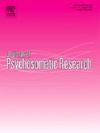Adherence to a healthy sleep pattern and the risk of kidney stone disease: A prospective study of UK biobank
IF 3.5
2区 医学
Q2 PSYCHIATRY
引用次数: 0
Abstract
Purpose
This research seeks to assess the connection between healthy sleep patterns and the occurrence of kidney stone disease (KSD) by analyzing data obtained from a large-scale cohort study.
Methods
We examined 313,870 initial participants without KSD from the UK Biobank. Five healthy sleep factors were assessed: no frequent excessive daytime sleepiness, early chronotype, no snoring, sleeping 7–8 h daily, and never or rarely experiencing insomnia at baseline. A healthy sleep score between 0 and 5 was assigned to participants according to these criteria. We utilized Cox proportional hazards models to calculate hazard ratios (HR) and 95 % confidence intervals (CI) between a healthy sleep score and the occurrence of KSD.
Results
During the follow-up period, 3818 new cases of KSD were recorded. After comprehensive adjustments, every 1-point rise in the healthy sleep score was associated with an HR of 0.93 (95 % CI: 0.90–0.96). Additionally, individuals with a healthy sleep score of 5 had a 20 % lower risk of KSD compared to those with scores between 0 and 2.
Conclusions
Our study results indicate that adhering to a healthy sleep pattern can reduce the risk of KSD.

坚持健康的睡眠模式和肾结石疾病的风险:英国生物银行的前瞻性研究
目的:本研究旨在通过分析一项大规模队列研究的数据,评估健康睡眠模式与肾结石疾病(KSD)发生之间的联系。方法:我们检查了来自UK Biobank的313,870名无KSD的初始参与者。评估了五种健康睡眠因素:没有频繁的日间过度嗜睡,较早的睡眠类型,没有打鼾,每天睡眠7-8小时,从未或很少经历失眠。根据这些标准,参与者的健康睡眠得分在0到5分之间。我们使用Cox比例风险模型来计算健康睡眠评分与KSD发生之间的风险比(HR)和95%置信区间(CI)。结果:随访期间共新增KSD 3818例。综合调整后,健康睡眠评分每上升1分,风险比为0.93 (95% CI: 0.90-0.96)。此外,健康睡眠得分为5分的人患KSD的风险比得分在0到2分之间的人低20%。结论:我们的研究结果表明,坚持健康的睡眠模式可以降低KSD的风险。
本文章由计算机程序翻译,如有差异,请以英文原文为准。
求助全文
约1分钟内获得全文
求助全文
来源期刊
CiteScore
7.40
自引率
6.40%
发文量
314
审稿时长
6.2 weeks
期刊介绍:
The Journal of Psychosomatic Research is a multidisciplinary research journal covering all aspects of the relationships between psychology and medicine. The scope is broad and ranges from basic human biological and psychological research to evaluations of treatment and services. Papers will normally be concerned with illness or patients rather than studies of healthy populations. Studies concerning special populations, such as the elderly and children and adolescents, are welcome. In addition to peer-reviewed original papers, the journal publishes editorials, reviews, and other papers related to the journal''s aims.

 求助内容:
求助内容: 应助结果提醒方式:
应助结果提醒方式:


